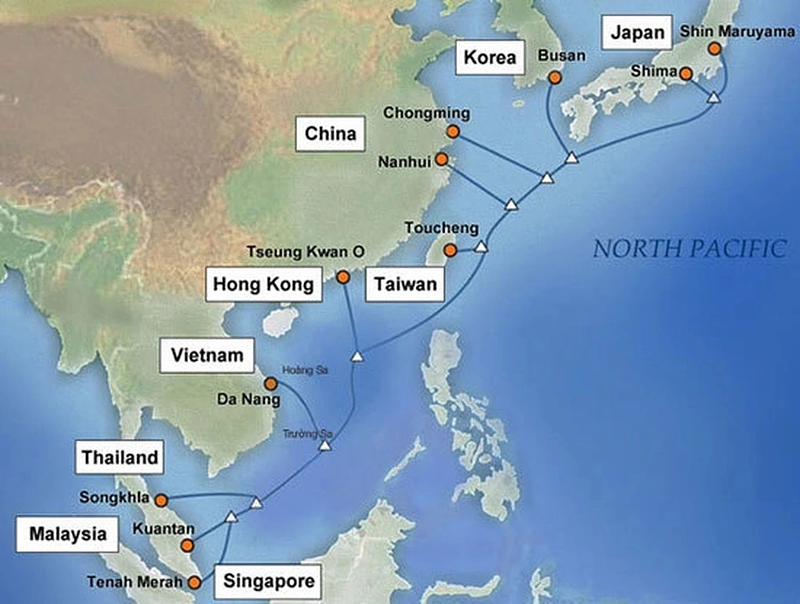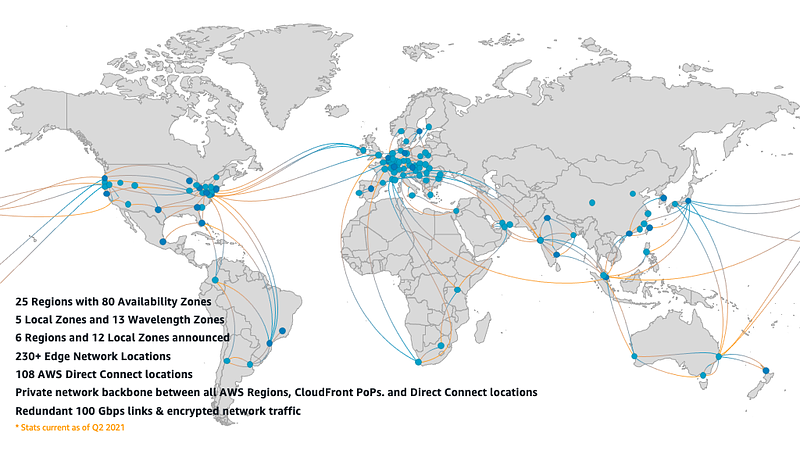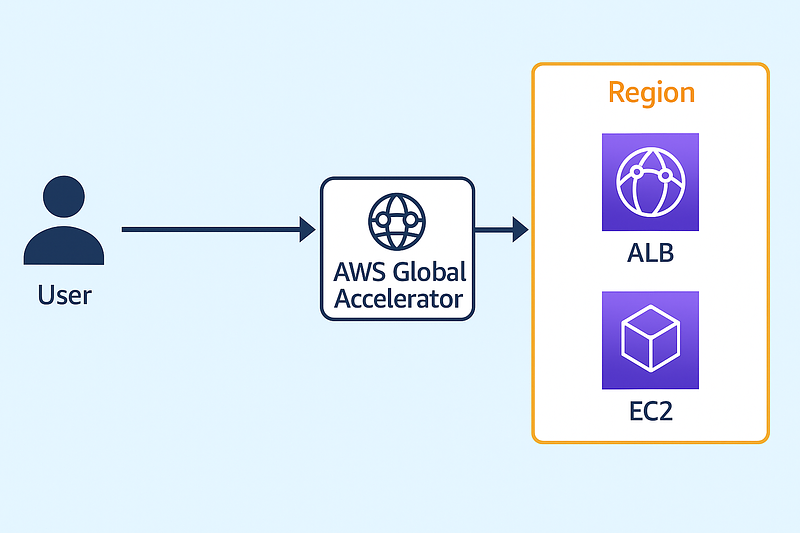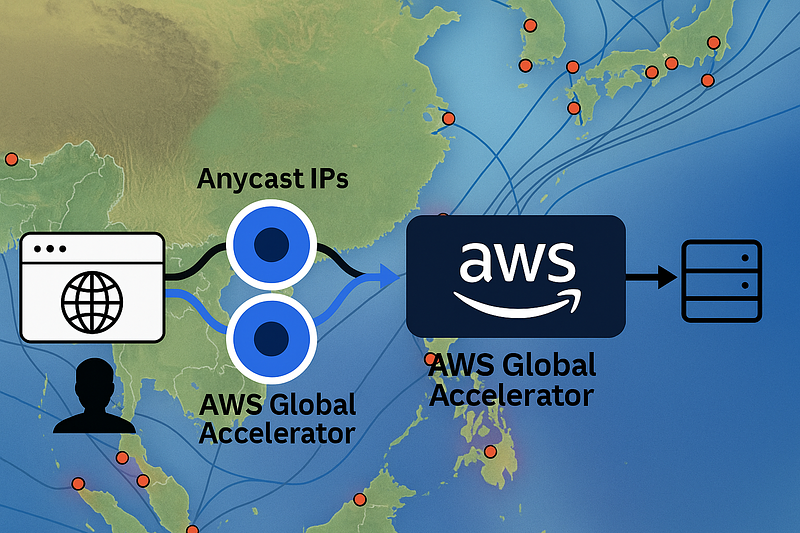1. The Problem: Sudden Slowness from Vietnam
Last week, my website suddenly became very slow when accessed from Vietnam. Normally, my pages load in less than two seconds, but this time they took ten to fifteen seconds or even timed out. The server hosting my website is located in the United States (us-east-1 region), so users in Asia must cross several international internet routes to reach it.
After investigating, I found that one of the major submarine internet cables in the region, the Asia-Pacific Gateway (APG), had developed a fault. According to information from a Vietnamese internet service provider, the management unit of the APG cable detected a problem on the S3 branch, located about 66 kilometers off Chongming Island (China). This branch connects parts of Southeast Asia to Japan and the United States across the Pacific. The incident disrupted traffic between Vietnam and international destinations, forcing connections to reroute through longer or congested paths and causing high latency and unstable speeds.

2. First Observations: CDN Helped, But Not Enough
My site already uses AWS CloudFront for delivering static assets such as images, CSS, and JavaScript. These files were still loading fast, because CloudFront has edge locations close to Vietnam, including in Singapore.
However, the HTML pages of my site are generated dynamically and served directly from the web server in the United States. These requests still had to travel through the public internet, which was affected by the cable issue. This explained the slow page rendering and long waiting times.
I began searching for a more reliable way to deliver dynamic content and found a solution: AWS Global Accelerator.
3. What Is AWS Global Accelerator?
AWS Global Accelerator is a network service that improves both the performance and availability of your applications across the world. It routes user traffic through Amazon’s private global network, instead of relying solely on the unpredictable public internet.
AWS operates one of the largest and most advanced private backbone networks on the planet, connecting its data centers across continents. When you use Global Accelerator, your users’ requests enter this private network at the nearest AWS edge location and travel across AWS’s backbone directly to your server. This greatly reduces latency and avoids unstable routes.

4. How It Works (Simplified Explanation)
When you enable AWS Global Accelerator for your website, AWS gives you two static Anycast IP addresses. These addresses represent your entire application globally.

Here’s what happens when someone visits your site:
- A user in Vietnam types your domain name into their browser.
- DNS resolves your domain to one of the Anycast IPs provided by AWS Global Accelerator.
- Because these IPs are advertised from many AWS edge locations around the world, the user’s request is automatically routed to the nearest AWS edge node (for example, Singapore).
- From that edge node, the request travels securely through AWS’s private global network to your application server in the United States.
- The response is sent back along the same optimized path.
This minimizes the number of hops and avoids congested international routes, so your users experience a much faster and more stable connection even during global internet disruptions.
5. What Is an Anycast IP?
In a traditional setup, your server has a single IP address hosted in one physical location. Every user worldwide connects directly to that address, no matter how far away they are.
With Anycast, the same IP address is announced from multiple servers (called edge nodes) in different regions. Internet routing protocols automatically send each user’s request to the closest available edge node in terms of network distance.
You can imagine it like having many “front doors” to your website - one in Singapore, one in Tokyo, one in London, and one in the United States - all sharing the same IP address. Users always connect to the nearest door, and AWS’s private network carries the traffic the rest of the way to your origin server.
This results in:
- Lower latency for users far from your origin.
- More predictable network performance.
- Better fault tolerance, since traffic can quickly reroute if one edge node becomes unavailable.
6. The Result: A Noticeable Improvement
After setting up AWS Global Accelerator, the difference was clear.
Even though my web server still runs in the United States, users from Vietnam, Thailand, Singapore, and Indonesia now connect through the nearest AWS edge location instead of crossing unstable public internet paths.
- Average latency dropped from around 350 ms to 160 ms.
- Page load times improved from 10+ seconds to about 2 seconds.
- Availability increased, because if one AWS edge path becomes congested or fails, traffic automatically reroutes through another.
In fact, the site now loads even faster than before the cable incident.
Test It Yourself with AWS Global Accelerator Speed Test
If you want to see the difference AWS Global Accelerator can make for your own connection, try the official AWS Global Accelerator Speed Test at https://speedtest.globalaccelerator.aws/.
7. Cost and Practical Notes
The pricing of AWS Global Accelerator is simple:
- $0.025 per hour for the accelerator (around $18 per month).
- $0.015 per GB for data processed through the accelerator (in addition to regular AWS data transfer rates).
For sites that serve users from multiple continents, the improved speed and reliability easily justify this cost.
8. Conclusion
AWS Global Accelerator is not just for large enterprise systems. It’s a practical tool for anyone running a site in one region but serving users globally.
If your main server is in the United States and you have visitors from Asia, Europe, or elsewhere, Global Accelerator can dramatically improve performance by routing users through AWS’s high-speed private network.

